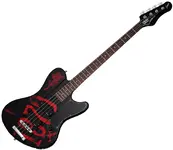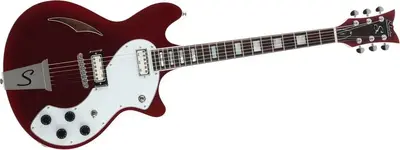I depends largely on what the depth of cut and how clean you want it as well as the timber and the power of the motor. I use a finer cut and go slowly. The biggest problem with rigid set ups for a bandsaw is stopping the kerf from bowing. Thats why I still cut by hand and feel freehand.
I've learned that from just habitually cutting from the same direction all of the time that you will lose the set from the teeth more from one side of the blade than the other. This will cause it to want to wander to the side that has the better set, and make it difficult to cut straight. If you're trying to re-saw a wide piece in a fixed guide and getting "bow", this might have something to do with it.
I've got a 14" cast iron frame band saw. It's a Rigid brand. It's identical to the saw they sell at Grizzly. It will cut to slightly more than a 6" depth now. I plan to make five shims from some 1/2" plate steel to raise it to a total cut of 8 1/2". There is a riser block kit available for the saw, but it raises it a full six inches. I don't need that much, and logic tells me that the saw will be more stable with less of a rise, so 2 1/2 it'll be for now. The kit isn't cheap either, so I'll be saving some money.
Making a deep cut that's greater than 6" or so in my thinking would require a blade with the teeth far apart, and a big gullet to clear away the sawdust. I go to a guy that buys bulk, and custom welds all of his blades so getting the longer blades won't be a problem. I'll see what he recommends.
DUDE!!
That Bass Looks Awesome.
Thanks Man!
Thanks for your help on that one. She really likes it, and has been gigging with it.
I started one before I got sick. I hope to get back to it soon
Wow, I didn't know you were ill. Big bummer there. I hope you're feeling better. Take care of yourself, it's the only one you've got.
How far did you get with your guitar?
I'm going to build another bass soon. It'll be a figured walnut top, on a chambered maple body, maple neck, maple board. I'm leaning towards a body shaped similar to this.

 I'll get some clips soon.
I'll get some clips soon.























